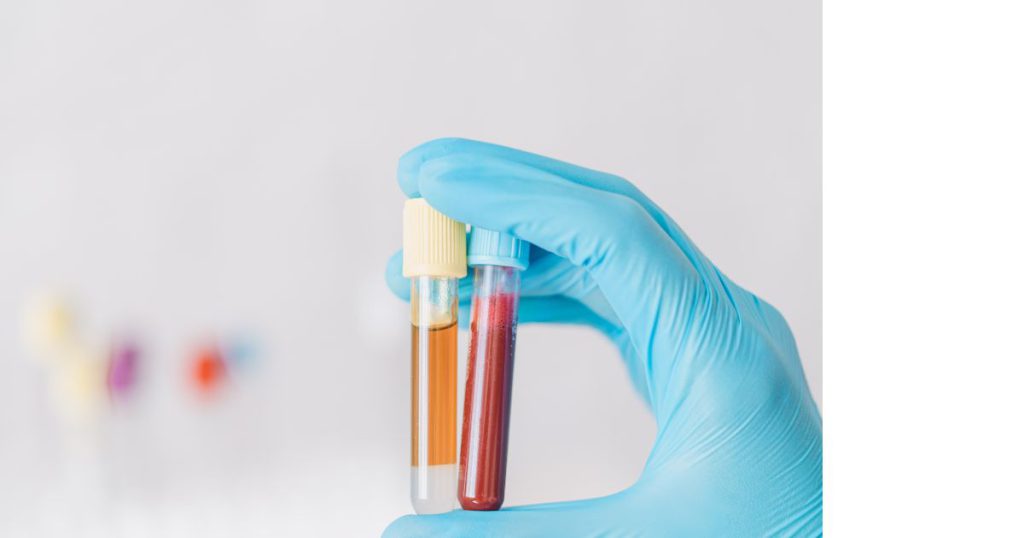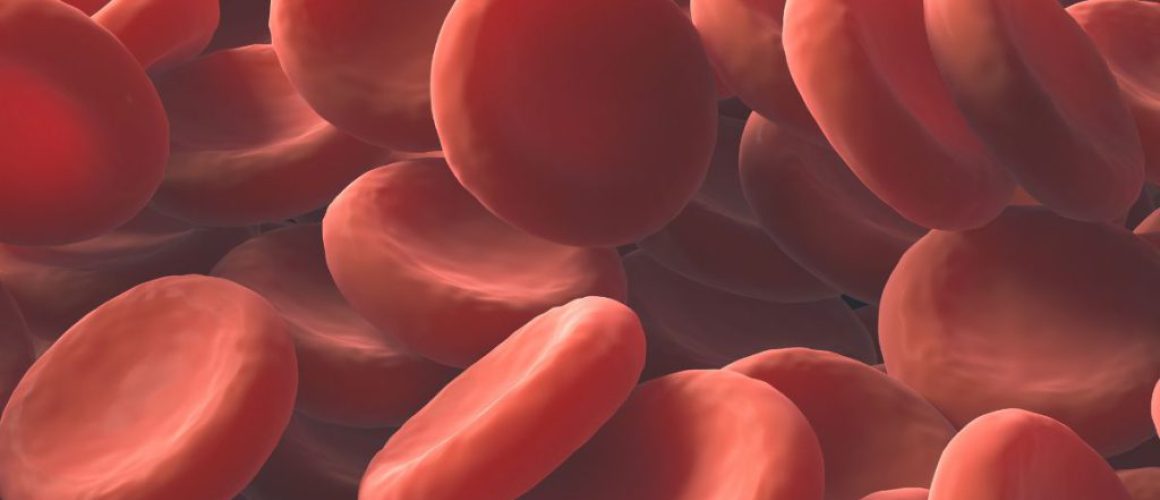Hematological Disorders: Unlocking the Mysteries of Blood
Table of Contents
Key Summary Table: Hematological Disorders
| Hematological Disorder | Description |
|---|---|
| Anemia | Condition characterized by a deficiency of red blood cells or hemoglobin |
| Hemophilia | Inherited bleeding disorder that impairs the blood’s ability to clot |
| Leukemia | Cancer of the blood or bone marrow, causing abnormal white blood cell production |
| Thrombocytopenia | Condition marked by a low platelet count in the blood |
| Sickle Cell Disease | Genetic disorder causing abnormal hemoglobin, resulting in misshapen red blood cells |
| Von Willebrand Disease | Inherited bleeding disorder due to a deficiency of von Willebrand factor |
| Polycythemia Vera | Bone marrow disorder leading to the overproduction of red blood cells |
| Idiopathic Thrombocytopenic Purpura | Autoimmune disorder causing a low platelet count |
| Myelodysplastic Syndromes | Group of disorders in which the bone marrow fails to produce healthy blood cells |
| Hemochromatosis | Genetic disorder leading to excessive iron absorption and storage |
Hematological Disorders? Blood gone wild! Join me as we unravel the mysteries of conditions like anemia, leukemia, and more. From the secrets hiding in blood cell morphology to the latest breakthroughs in diagnostics and treatments, let’s dive into this captivating realm of medical puzzles. Ready to explore? Keep reading!
Introduction
Blood, the life-sustaining river flowing within us, holds secrets that can help us understand various health conditions. In this article, we embark on a journey through the captivating world of hematological disorders. From anemia to bleeding disorders and beyond, we’ll explore the intricate workings of our blood and how imbalances can lead to these conditions. So, join me as we delve into the realm of hematological disorders, where blood takes center stage in the theater of health.
As medical technologists, we unlock the secrets that blood holds, diagnosing and understanding the complexities of hematological disorders, bringing light to the darkness within.
Hematological Disorders: Decoding the Complexity
When we hear the term “hematological disorders,” it encompasses a broad spectrum of conditions affecting the blood and its components. Hematology is the branch of medicine that focuses on the study of blood and blood-forming organs, while hematological disorders refer to abnormalities in the blood’s composition or functioning. Let’s uncover the fascinating intricacies of some of these disorders:
Common Hematological Disorders
| Hematological Disorder | Description |
|---|---|
| Anemia | Condition characterized by a deficiency of red blood cells or hemoglobin |
| Hemophilia | Inherited bleeding disorder that impairs the blood’s ability to clot |
| Leukemia | Cancer of the blood or bone marrow, causing abnormal white blood cell production |
| Thrombocytopenia | Condition marked by a low platelet count in the blood |
| Sickle Cell Disease | Genetic disorder causing abnormal hemoglobin, resulting in misshapen red blood cells |
| Von Willebrand Disease | Inherited bleeding disorder due to a deficiency of von Willebrand factor |
| Polycythemia Vera | Bone marrow disorder leading to the overproduction of red blood cells |
| Idiopathic Thrombocytopenic Purpura | Autoimmune disorder causing a low platelet count |
| Myelodysplastic Syndromes | Group of disorders in which the bone marrow fails to produce healthy blood cells |
| Hemochromatosis | Genetic disorder leading to excessive iron absorption and storage |
Anemia: When Red Blood Cells Fall Short
Key Aspects of Anemia
- Aplastic anemia: Bone marrow fails to produce enough new blood cells
- Iron deficiency anemia: Caused by a lack of iron in our diet or difficulty absorbing it
- Sickle cell disease: An inherited condition that causes red blood cells to become misshapen
Anemia, a well-known hematological disorder, occurs when the body lacks a sufficient number of healthy red blood cells or hemoglobin, the protein responsible for carrying oxygen throughout the body. From aplastic anemia to iron deficiency anemia and sickle cell disease, various factors can lead to this condition. Anemia can result in fatigue, weakness, pale skin, and shortness of breath, highlighting the crucial role that red blood cells play in our well-being.
Anemia is like a quiet thief, slowly robbing our bodies of the energy and vitality we need to thrive. When the red blood cells, those tiny superheroes responsible for ferrying oxygen to every nook and cranny of our being, fall short in number or functionality, we find ourselves facing the relentless grip of this hematological disorder. Aplastic anemia, a condition where the bone marrow fails to produce enough new blood cells, can leave us feeling weak and fatigued, as if our own vitality is slipping away. Iron deficiency anemia, often caused by a lack of iron in our diet or difficulty absorbing it, may turn our skin pale and render us susceptible to exhaustion. And then there’s sickle cell disease, an inherited condition that causes red blood cells to become misshapen, hindering their ability to transport oxygen efficiently. These are just a few examples of the intricate web of factors that contribute to anemia, reminding us of the indispensable role that red blood cells play in maintaining our well-being and propelling us forward in life’s endeavors.

Bleeding Disorders: When Coagulation Takes a Hit
Key Aspects of Bleeding Disorders
- Hemophilia: An inherited condition, characterized by a deficiency or absence of specific clotting factors
- Idiopathic thrombocytopenic purpura (ITP): A disorder where the body’s immune system mistakenly destroys platelets
The ability of our blood to clot properly is like a well-rehearsed ballet, harmoniously orchestrated to prevent excessive bleeding. But what happens when this delicate choreography is disrupted? Enter the realm of bleeding disorders, where the elegant dance of coagulation falters. Hemophilia, idiopathic thrombocytopenic purpura, and a myriad of clotting disorders find their place under this category, challenging both patients and healthcare professionals alike.
Hemophilia, often referred to as the “royal disease,” takes the spotlight in this troupe of bleeding disorders. It is an inherited condition, characterized by a deficiency or absence of specific clotting factors, impairing the blood’s ability to coagulate effectively. Even a small cut can lead to prolonged bleeding, transforming a routine injury into a potential danger. Yet, amidst the hurdles and complexities, the resilience and strength of those living with hemophilia shine through, inspiring advancements in treatments and care.
Another protagonist in this dramatic performance is idiopathic thrombocytopenic purpura (ITP), a disorder where the body’s immune system mistakenly destroys platelets, the tiny cells essential for clot formation. Unpredictable bruises, petechiae, and bleeding gums become unwelcome guests, adding uncertainty and challenges to the lives of those affected. Yet, through vigilant monitoring and strategic interventions, patients with ITP can navigate their way forward, finding solace in the ongoing pursuit of effective treatments and improved quality of life.
As medical technologists, we step into this arena of bleeding disorders armed with knowledge, compassion, and a relentless pursuit of answers. Understanding the intricate mechanisms of blood coagulation is key to diagnosing and managing these conditions effectively. Through laboratory analyses, we decipher the intricate dance of clotting factors, platelet counts, and coagulation times, revealing insights that guide treatment strategies and empower patients to reclaim control over their lives.
Leukemia: Unleashing the Chaos Within
Key Aspects of Leukemia
- Abnormal proliferation of white blood cells
- Disruption of balance within the bloodstream
- Bone marrow transplants offer renewed hope
Leukemia is like an unwelcome intruder that disrupts the harmony within our bloodstream. The abnormal proliferation of white blood cells, stemming from the bone marrow, throws the delicate balance out of sync. It’s a battle that requires a multi-faceted approach, with pediatric hematology oncology at the forefront. The dedicated specialists in this field pour their hearts and souls into finding innovative solutions to combat leukemia. Among the arsenal of treatments, bone marrow transplants offer renewed hope, replacing the faulty cells with healthy ones, allowing patients to embark on a journey towards recovery. With each passing day, the relentless efforts of medical professionals and the advancements in oncology shine a light on the path towards more effective treatments and improved outcomes. Together, we strive to conquer the chaos that leukemia unleashes, offering solace and healing to those affected by this formidable foe.
Sickle Cell Disease: A Battle with Misshapen Warriors
Key Aspects of Sickle Cell Disease
- Inherited genetic disorder
- Abnormally shaped red blood cells
- Misshapen blood cells cause blockages in the blood vessels
Within the realm of hematological disorders, one condition that stands out with its unique challenges is Sickle Cell Disease. It is an inherited genetic disorder characterized by abnormally shaped red blood cells. These misshapen warriors, instead of flowing smoothly through the blood vessels, take on a sickle-like form, causing them to become rigid and prone to getting stuck. This obstruction disrupts the normal flow of oxygen and nutrients to various tissues and organs, leading to a range of complications and symptoms.
Living with Sickle Cell Disease is a constant battle. Those affected often experience episodes of excruciating pain, known as sickle cell crises, as the misshapen blood cells cause blockages in the blood vessels. These crises can be triggered by various factors such as stress, dehydration, or extreme temperatures. Alongside the pain, individuals with Sickle Cell Disease may also face complications like anemia, organ damage, infections, and even strokes.
Despite the challenges, there is hope. Medical advancements and ongoing research have paved the way for better management of Sickle Cell Disease. Treatments such as pain management strategies, blood transfusions, and medication regimens are available to help alleviate symptoms and minimize complications. Moreover, awareness and support within the medical community and society at large are crucial in providing comprehensive care and improving the quality of life for individuals living with this complex disorder.
Bone Marrow Transplant: Restoring Hope
Key Aspects of Bone Marrow Transplant
- Replaces damaged or diseased bone marrow with healthy stem cells
- Revolutionized the treatment of various conditions, including leukemia and certain blood disorders
When hematological disorders reach a critical stage, a bone marrow transplant can offer a glimmer of hope. This procedure involves replacing damaged or diseased bone marrow with healthy stem cells. It has revolutionized the treatment of various conditions, including leukemia and certain blood disorders. The process is intricate, but it provides a lifeline for those in need, giving them renewed opportunities for a healthier future.
Hematology’s Impact on Forensic Medicine: Unraveling Clues
The world of blood extends beyond medical diagnoses. Hematological analysis plays a crucial role in forensic investigations, helping to uncover critical evidence. DNA analysis, a powerful tool in forensic medicine, enables the identification of individuals through their unique genetic markers. By examining blood samples found at crime scenes, forensic scientists can build a compelling case that withstands scrutiny in the courtroom. Technology has played a significant role in advancing these capabilities, enhancing our ability to bring justice to light.
Common Symptoms of Hematological Disorders
- Fatigue and weakness
- Pale skin or yellowing of the skin (jaundice)
- Shortness of breath
- Unexplained bruising or bleeding
- Frequent infections
- Enlarged lymph nodes
- Bone pain or joint pain
- Abnormal bleeding during menstrual periods
- Increased susceptibility to infections
Call to Action
If you find the captivating world of hematology as intriguing as I do, continue exploring this fascinating field. Visit my Hematology index page or the Hematology category for more in-depth articles and insights.
Other posts of interest: Blood Types and Compatibility and Hematological Disorders: Unlocking the Mysteries of Blood
Through knowledge, curiosity, and innovation, we can unlock the mysteries of hematological disorders and make significant strides in diagnosing, treating, and preventing these conditions. Let’s embrace the captivating world of blood and its immense potential to transform lives.
Conclusion
Hematological disorders offer a window into the intricacies of our blood’s composition and functioning. From anemia to bleeding disorders, leukemia, and beyond, these conditions encompass a broad spectrum of health challenges. By unraveling the complexities of hematological disorders, we pave the way for improved diagnostics, treatments, and ultimately, better health outcomes. Let us continue to explore, learn, and innovate, unlocking the potential of blood to shape a healthier future.
Frequently Asked Questions
Are hematological disorders curable?
The curability of hematological disorders depends on the specific condition and its stage. Some disorders, such as certain types of anemia, can be managed effectively with proper treatment and lifestyle modifications. In other cases, like acute leukemia, aggressive treatments like chemotherapy and bone marrow transplants may offer the potential for a cure. However, it’s important to consult with healthcare professionals for an accurate assessment and personalized treatment plan.
Can hematological disorders be prevented?
While not all hematological disorders can be prevented, adopting a healthy lifestyle can help reduce the risk of certain conditions. Regular exercise, maintaining a balanced diet, staying hydrated, avoiding smoking, and managing stress can contribute to overall well-being. Additionally, following recommended vaccinations and practicing safe habits, such as using protection during sexual activity, can lower the risk of infections that may lead to hematological disorders.
Are hematological disorders hereditary?
Yes, some hematological disorders have a hereditary component. Conditions like sickle cell disease, hemophilia, and certain types of thalassemia are inherited through genetic mutations. They can be passed down from parents to their children. However, it’s important to note that not all hematological disorders are hereditary. Some disorders can develop due to other factors, such as environmental exposures or acquired conditions.
How are hematological disorders diagnosed?
The diagnosis of hematological disorders involves a comprehensive evaluation that may include blood tests, bone marrow biopsy, genetic testing, imaging studies, and clinical assessments. Blood tests, such as complete blood count (CBC) and coagulation tests, provide valuable information about the composition and functioning of the blood. These diagnostic tools, along with medical history and physical examinations, help healthcare professionals determine the presence and type of hematological disorder.
What are the treatment options for hematological disorders?
Treatment options for hematological disorders vary depending on the specific condition. They may include medication, blood transfusions, chemotherapy, radiation therapy, bone marrow or stem cell transplantation, and targeted therapies. The choice of treatment is guided by factors such as the type and stage of the disorder, the patient’s overall health, and individualized treatment goals. It’s essential for patients to work closely with their healthcare team to develop a comprehensive treatment plan tailored to their specific needs.
Can hematological disorders affect people of all ages?
Yes, hematological disorders can affect individuals of all ages, from infants to the elderly. While some disorders, such as certain types of anemia, may be more prevalent in specific age groups, others, like leukemia, can occur across various age ranges. It’s important to raise awareness and ensure that individuals of all ages have access to timely and appropriate diagnosis, treatment, and supportive care for hematological disorders.
Sources
American Society of Hematology
Disclaimer
I want to emphasize that I am a student, and the information provided in this article is based on my knowledge, research, and personal understanding as a medical technology student. While I strive for accuracy and have made every effort to ensure the information is reliable, it is important to note that I am not a qualified healthcare professional or an expert in the field.
Medical knowledge and practices are constantly evolving, and new research may emerge that could alter or add to the understanding of hematological disorders. Therefore, it is always recommended to consult with healthcare professionals or specialists for accurate diagnosis, personalized advice, and appropriate treatment plans.
I encourage readers to use this article as a starting point for their own exploration and to seek guidance from qualified professionals for any medical concerns or specific questions related to hematological disorders. Remember that each individual’s situation is unique, and what may be applicable for one person may not necessarily apply to another.
The purpose of this article is to provide general information and raise awareness about hematological disorders, fostering a sense of curiosity and understanding. However, it is essential to rely on comprehensive medical advice from professionals when making decisions about personal health or the health of others.
Please consult with healthcare professionals and specialists for any specific medical advice or concerns.
Sean Schepers is a third-year Medical Technology student at Mahidol University with a passion for all things health and medicine. His journey into the world of medicine has led him to explore various fields. Sean's blog posts offer a unique perspective, combining his academic insights with personal experiences. When he's not studying or blogging, Sean enjoys keeping up with politics and planning his future career in medicine.
In addition to his studies, Sean serves as the chairman of the Rights, Liberties, and Welfare Committee, a role that reflects his commitment to advocacy and social justice. Beyond his academic pursuits, Sean offers tutoring services in English and Biology, further demonstrating his dedication to education and mentorship. His journey is one of continuous discovery, and he invites others to join him as he explores the dynamic and transformative world of medical technology.


